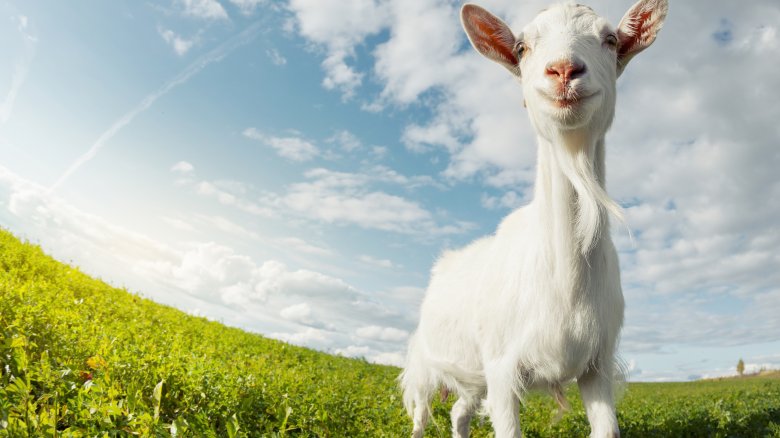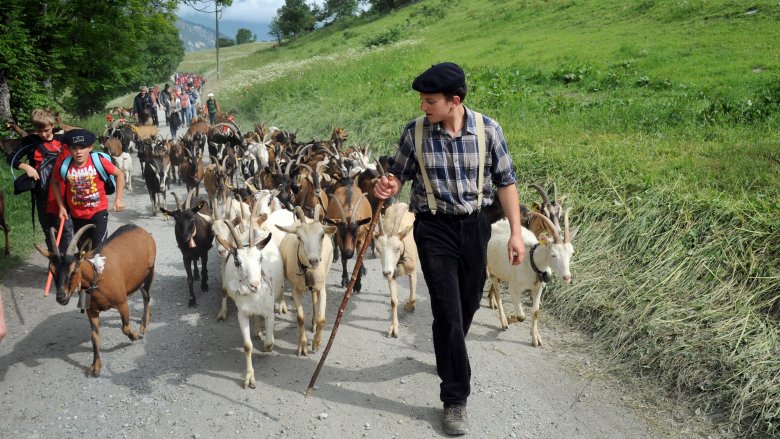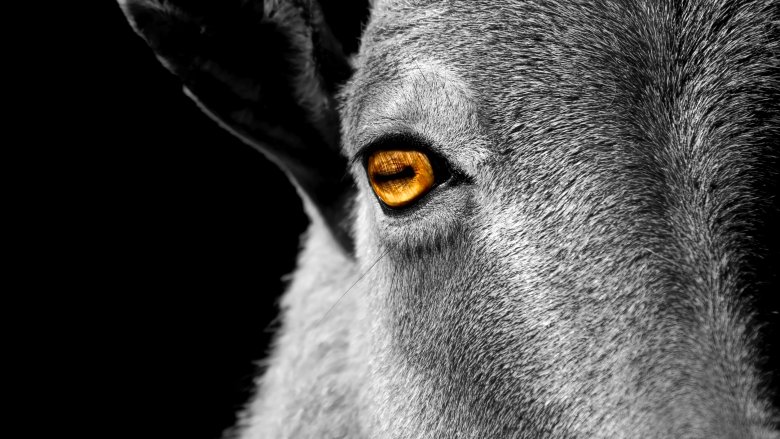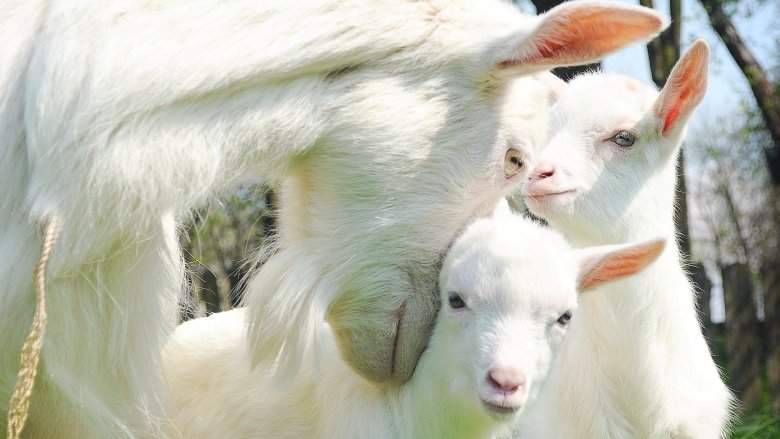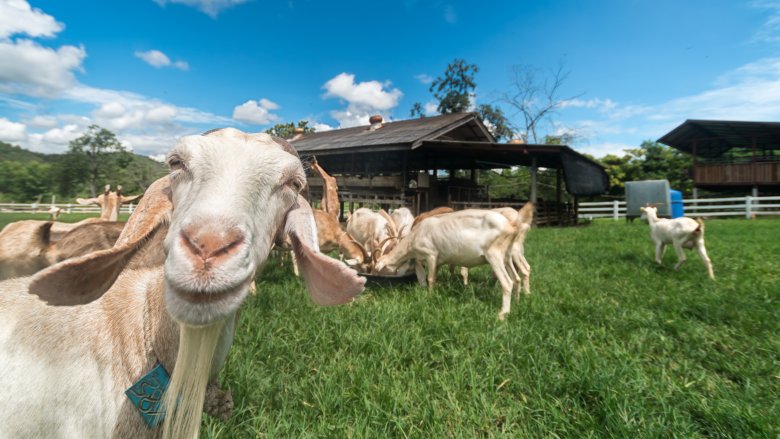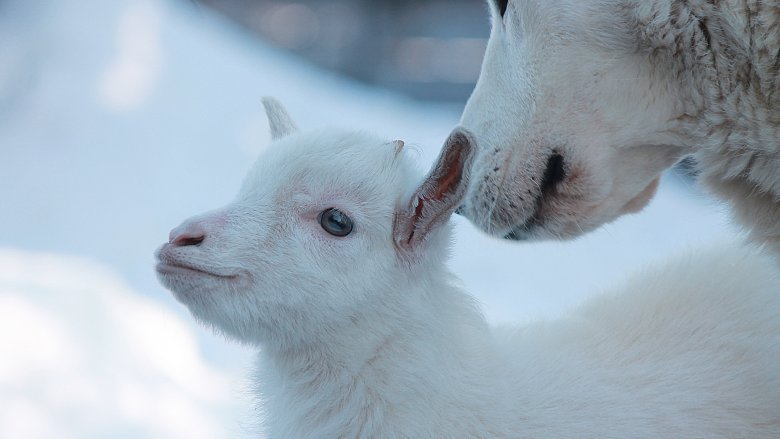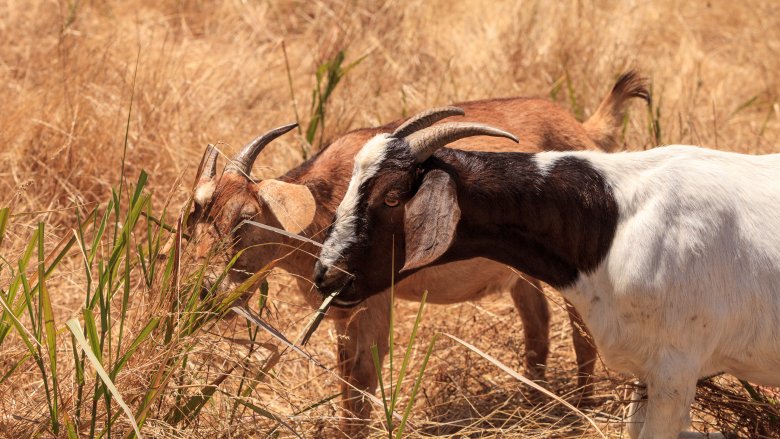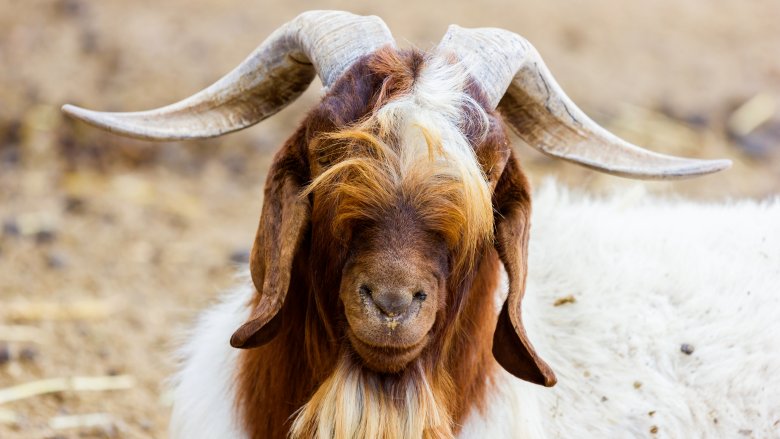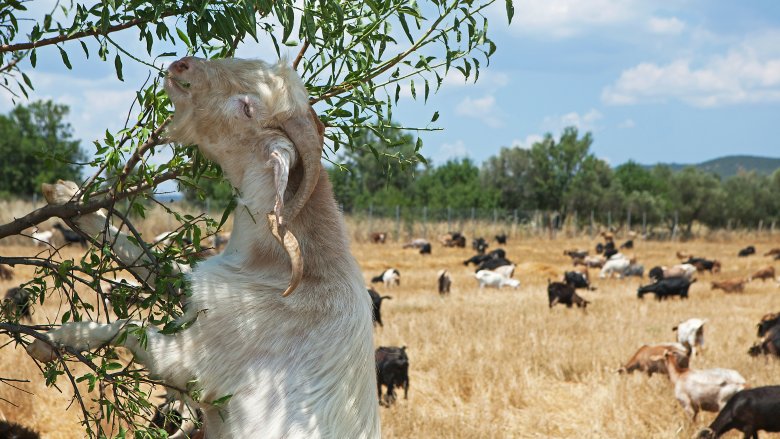Will Goats Really Eat Anything? (And Other Cool Goat Facts)
Let's get it out of the way up front: goats are really darn cute. Their extra helping of adorable is a winning formula for YouTube stardom, if nothing else. But how much do you really know about them? Goats are a lot cooler than you might think.
When did we domesticate goats?
Goats are the class clowns of the animal kingdom, and we've probably known that for a long time. According to a partner study from the Tokyo University of Agriculture and Fudan University, goats have been hanging out with humans (and almost certainly making us laugh) since Neolithic times. Researchers traced the archaeological timeline of goats back more than 10,000 years and found they were prancing alongside our ancient ancestors in the Fertile Crescent and Western Asia.
There's obviously a bit of guesswork involved when you're going back that far, but researchers think the earliest domesticated goats were the bezoars, which teamed up with Neolithic peoples after they had a major population boom in the Late Pleistocene era. From there, they strolled alongside us as we spread into China, Mongolia, Southern Asia, and the rest of the world. It makes sense, too. We were doing a lot of traveling, and goats are essentially meat and milk wrapped up in an adorable, adaptable little package, like a prehistoric walking taco.
What's with those creepy eyes?
There's nothing creepy about goats from a distance, but get up close and personal and you'll see they have pretty disturbing eyes. Sheep have the same weird, rectangular pupils, and according to research from UC Berkeley, there's actually a very good reason for that (other than channeling the devil).
A goat's rectangular pupils are perfect for a grazing prey animal. Computers gave researchers a look through goat eyes, and their rectangular shape increases their field of vision and allows them to take in more light while blocking the brightest of sunlight coming from above. They also found that when a goat lowers its head to graze, its eyeballs rotate to keep their rectangular pupils parallel to the ground. That allows them to keep a lookout on the horizon while eating, and when you're a tasty, tasty goat, being able to keep watch for predators means the difference between life and death. Those eyes might be creepy, but they're also awesome.
What's the deal with fainting goats?
Watching videos of fainting goats says a lot about the type of person you are. Do you laugh? Feel a bit bad for them? Technically, neither is wrong, but you might be a horrible person if you make them faint on purpose.
First, they don't actually faint — fainting goats are fully conscious through the whole episode. What's really happening is the brain is sending the body a signal that should trigger a fight or flight response. According to National Geographic, it's a genetic mutation called myotonia congenita that prevents their muscles from receiving a chemical telling them to move again after they tense up. Oh, and if someone does it to them repeatedly, they can develop serious stress issues, so knock it off.
The Guardian says we know exactly when they became a thing and why the mutation was encouraged to spread, too. In the 1880s, a Tennessee farm laborer came to the farm of a Dr. Mayberry. He had four goats with him, and they had a tendency to "faint." Mayberry saw something of an opportunity. Most goats love to jump, but the genetic condition these little guys came with meant they didn't jump or climb like their counterparts. They were easier to keep corralled, and since their offspring were still tasty, they became a favorite of farmers who were raising goats as a food source. So that adorable fainting trick that makes them an internet favorite also made them a slaughterhouse favorite.
Goats have accents
Proving there's nothing science won't study, researchers from the Queen Mary University of London found that goats developed accents based on who they were hanging out with. Young goats who live with siblings or peers develop distinct voices, and once they grow up and move into different groups, their voices change to fit in with their new surroundings.
It's kind of like that guy who thinks putting on an accent when he's on vacation will help him blend in with the locals, except goat accents are actually important. Goats are now on the (short) list of animals capable of adjusting their speech patterns. Researchers think that demonstrating this complex thinking might help bring about stricter guidelines for animal welfare. Goats are people, too, right?
How smart are goats?
Depending which videos you've seen, you might think goats are pretty dumb. But researchers from the Queen Mary University of London (who maybe have a thing for goats) found these guys are the Einsteins of the barnyard.
Generally, it's believed domestication makes animals just a little bit dumber. They don't need to waste brain power on surviving when humans are around to do the heavy lifting. But when researchers tested goats' abilities to solve problems, they found most of them were surprisingly good at it. When the goats were presented with a puzzle box they not only solved the puzzle pretty quickly, but remembered how to get the food out when they were given the same gizmo ten months later. That's not bad, considering many of us still can't figure out a Rubik's cube.
Later, Queen Mary University researchers found that when goats failed at figuring out the puzzle, they'd look to a human to fix it for them. That's an interspecies relationship that's rare, and it's a big deal that says just how highly they think of us. They've also pushed a goat's long-term memory out to four years. That's seriously impressive. Consider how many times you've forgotten your email password: maybe you should tell it to a goat.
How adaptable are goats?
Goats aren't just a pretty face. Those researchers from the Queen Mary University of London, the ones with the goat obsession, think there's a connection between goat intelligence and their ability to thrive in almost any environment, because they totally can.
Goats spread with humankind, and along the way they've proven themselves incredibly efficient at doing things that are actually pretty complicated, like foraging for food in completely foreign areas. (If you don't think that's tough, try ordering the food you actually want from a French menu.) Goats didn't just survive in new areas, they thrived like they have for thousands of years.
Researchers from the Autonomous University of Barcelona have discovered some incredible adaptations in a prehistoric goat that lived on the island of Majorca for around five million years. They were hunted to extinction when humans made landfall about 3,000 years ago, but before that, they'd managed to thrive by becoming smaller, slower, and — remarkably — by varying their metabolic rates during periods of drought. The goats were able to conserve energy by basking in the sun instead of grazing and being the prey animals you expect. If that sounds like something a reptile would do, that's exactly right. These prehistoric goats put human adaptability to shame. If you're not convinced, go move your kitchen table a couple inches to the right and see how adaptable you are.
There are fire-fighting goats
Dogs are called man's best friend, but seriously, when's the last time they really did anything for us? Modern dogs are totally skating by on their ancestor's contributions, but goats are still working tirelessly to keep us safe, especially in wildfire-prone areas. According to Scientific American, goats are the reason wildfires haven't reached the San Francisco Bay Area in years, and it's all because entire herds are dispatched to graze on dry brush before fires can start. A goats-for-hire company might seem pretty hipster, but goats have been performing this fire prevention service for a long time.
Even if herds of wild goats aren't acceptable anymore, it's a good thing we keep them busy. The Smithsonian says about 6,000 wildfires break out in California every year. Goats are particularly well-suited to the task because they'll choose dry brush over grass any day of the week. They can also eat problem vegetation like poison oak with no problem. All hail the mighty goat.
Why don't goats in most YouTube videos have horns?
Goats have had an unfortunate history of being associated with Satan, and even though their PR department insists they don't condone that sort of activity at all, the association persists. But you might have noticed there's one thing most of the adorable YouTube goats are missing that are front and center in Satan's goats: the horns. All goats actually do have horns, but most husbandry organizations — like the 4-H — recommend a process called "disbudding." Honestly, it's pretty bad. When a goat is between three and seven days old, the horns are removed with either an iron, an electric rod, or a chemical paste. That's mostly done to keep the goats from hurting each other, their humans, or themselves if they get tangled up in something. Still, welcome to the world, little goat baby!
It's a shame we get rid of the horns, too, because they're pretty cool. The Old Irish Goat Society says when Irish goats keep their horns, they grow rings. Just like with a tree, you can tell the goat's age by counting the rings, although trees don't squirm as much.
Are there real wild goats?
The short answer is, "Yes, but they're not the ones you're thinking of." Mountain goats probably come to mind when you think of wild goats, but according to the National Forest Foundation, mountain goats are more closely related to antelope and cattle than to little Buttermilk.
But there are wild goat populations all over the world, and some are humans' fault. According to the Australian government, goats were introduced to that continent on the First Fleet. Since 1788, they've multiplied and spread and multiplied some more — adaptability at work. There are millions of feral Aussie goats now, and they're considered pests that compete with native species for resources. Bad goats!
That's not the whole story of feral goats, though. Ireland has an entirely different opinion about theirs. The Emerald Isle's feral goats were introduced to the island about 4,000 years ago, which is apparently long enough to pick up the lingo and be considered part of the native landscape. Kerry Climbing notes it's illegal to hunt them, and they're such an important part of Irish history they're sort of an honorary native species. It must be the accent.
Tree-climbing goats are an internet meme to see what I'll believe, right?
You've probably heard you shouldn't believe everything you hear on the internet, but sometimes, the internet is 100 percent correct — like when you saw that meme about the tree-climbing goats. They live in Morocco and they've learned to climb argan trees. They chow down on the tasty leaves and fruit, then poop out the nuts.
According to New Scientist, the oft-told story is that goats' argan-filled poop is collected, the undigested nuts are retrieved, and then argan oil is made from the poop-nuts. Doesn't sound familiar? It's used in beauty products, and if you listen to really awful TV doctors, you'll find it's touted as everything from a hair conditioner to a stretch mark remover. It isn't clear whether the goats actually poop out the seeds or spit them out — research indicates the latter.
Either way, the goats are actually an important part of the ecosystem. Whether they spit out the seeds or swallow them isn't really relevant, as the end result is the same — they make it easier for humans to collect the nuts and they help in the propagation of the argan trees. And Moroccan poop jokes.
Will goats really eat anything?
The other thing you've probably heard about goats is they'll eat anything that isn't nailed down ... and even some things that are. That's no more true than their connection to the devil, and it's repeated over and over again because even goats are judged by their appearance. According to Animal Nutrition experts at Auburn University, goats don't actually eat everything, but they do want to check everything out and to see what's edible.
Professor Sandra G. Solaiman told Modern Farmer that while goats are incredibly curious and they'll investigate everything, they don't eat everything. When it comes to actually eating, that adaptability and intelligence comes into play to give the appearance of being bottomless garbage disposals. They'll find nutritious food anywhere.
So, there you have it. You can think of goats as really cute toddlers, putting everything in their mouths and only occasionally eating any of it. More often they just make you yell, "What do you have in your mouth?"
